About five types of different rots are found on cucumbers. The article describes those that are most often found among amateur summer residents. They are caused by pathogenic fungi. Greenhouse cucumbers are more severely and more often affected by rot, but outdoors these diseases are much less common. Even in cold and damp weather, pathogens do not develop as strongly on ground cucumbers.
| Content:
|
White rot
Often strikes greenhouse cucumbers, practically never found in open ground. In a greenhouse, it affects all parts of the plant: roots, leaves, petioles, stems and greens.
Description of the pathogen
- The causative agent of white rot is the pathogenic fungus sclerotinia.
- Preserved in soil and plant debris.
- It spreads by wind (spores or pieces of mycelium) and mechanically (with soil or irrigation water).
- During the life of the parasitic fungus, toxins are released that kill the cells of the affected plants.
Factors of disease spread
In the first half of summer, vines and roots are more affected, in the second half - green plants.
- Rot spreads at high humidity and low temperature in the greenhouse (below 20°C). In open ground it is found in very cold and rainy summers, when there are few sunny days and daytime temperatures are not higher than 20-22°C.
- Watering with cold water, even at a relatively high temperature, provokes the germination of fungal spores. In this case, the roots of the cucumber are most often affected.
- Thickened planting. In such thickets there is always high humidity, insufficient ventilation and poor sun heating. This is a very favorable environment for various rots, including white rot.
- Untimely pruning of greenhouse cucumbers, especially when growing varieties with strong branching, contributes to the spread of the disease.
- In spring, white rot often spreads when seeding crops (lettuce, leaf parsley, dill) are sown in cucumbers.
Almost always, infection occurs through wounds.
Signs of defeat
- A flaky, cotton-like white coating appears on the affected aboveground organs. Black spots of sporulation - sclerotia - gradually appear on it.
- Affected stems and fruits soften and become slimy.
- The leaves lose turgor and wither. Greens become slimy, bitter and inedible.
In the absence of proper measures, plants die.
Treatment of white rot
- In the fight against sclerotinia, the most effective copper-containing drugs are: Abiga-Pik, HOM, Ordan, Bordeaux mixture. Plants are treated when the first signs appear 2-3 times with an interval of 10 days. It should be borne in mind that after spraying greens should not be eaten for 2 weeks. If the roots are damaged, watering is carried out with the same preparations.
- For small foci of infection, biological products Planriz, Alirin B, Gamair are effective.
- Simultaneously with spraying, the cucumbers are fed with nitrogen fertilizers with the addition of a few grains of copper sulfate.
- Removing all affected leaves, shoots and greens.
- Since the infection penetrates the plant tissue through wounds, after trimming the leaves and pinching the shoots, the cucumbers are pollinated with ash, chalk, and tobacco dust.
With timely implementation of protective measures, white rot disappears completely.
Traditional methods of treatment
At the very beginning of the disease, the methods are quite effective.
- The white coating that appears is removed manually, and the damaged area on the stem or leaves is treated with potassium permanganate and sprinkled with ash or tobacco dust. You cannot do this with greens, because when sclerotinia appears, they become bitter and nothing can correct this. Damaged fruits are removed and burned.
- Spraying plants with milk and iodine. In 10 liters of water, dilute 1 liter of milk and 10 g of an alcohol solution of iodine.As an adhesive, add 10 g of grated solid soap or 40 ml of liquid soap. The best is tar soap.
- Mix ash and ground chalk in equal parts and add a little water to the mixture to form a thick paste. This putty is used to lubricate sections when removing whiskers and stepsons, as well as wounds after removing the mycelium. The method is somewhat labor-intensive, but with an increased risk of disease it is quite reliable.
Disease prevention
- Ventilation of the greenhouse. Humidity must be reduced to 80-85%.
- Removing all damaged plant tissue. If the roots are damaged, and white rot, as a rule, affects the most superficial roots, then the plaque is removed, and the root itself is treated with ash-chalk paste.
- Reduce watering. This is done to reduce the release of dew droplets by cucumbers in the morning.
Root rot (fusarium wilt)
Fusarium is rotting of the roots and root collar of a plant. Found in greenhouses. Cucumbers in open ground do not suffer from fusarium. The disease can appear at any stage of plant development, but most often occurs during the fruiting period.
Description of the pathogen
- The disease is caused by a pathogenic fungus.
- Preserved in soil, plant debris and seeds.
- The pathogen enters plants through damaged roots and root hairs, especially when cucumbers are loosened during cultivation.
In greenhouses, if possible, it is necessary to observe crop rotation and not plant cucumbers in one place for 2 years in a row. For example, tomatoes are less often affected by root rot and these crops can be alternated in a greenhouse.
Favorable conditions for the development of the disease
Root rot appears quite often in greenhouses where there are insulated manure beds.Usually, cucumbers for biofuel are planted very early, and although the soil itself is warm, significant fluctuations in day and night temperatures (in spring in a greenhouse they can be more than 20°C) contribute to the appearance of rot.
- Reduced soil and air temperatures.
- Sudden changes in day and night temperatures.
- Watering cucumbers with cold water.
- Waterlogged soil is a favorable environment for fungal development and plant infection.
All factors are present in the greenhouse, while outside the microclimate fluctuations are not so sharp.
Signs of root rot damage to cucumbers
The earlier they appear, the greater the yield loss.
- Wilting leaves on cucumbers. It starts at the top and progresses quickly. The cucumbers look like they haven't been watered for a long time. But even after watering, the leaves continue to hang like the ears of a spaniel.
- Brown spots appear on the root collar, which then merge.
- The root collar turns brown, softens and rots.
- A pinkish coating appears at the bottom of the stem - sporulation of the parasite.
- Rot spreads to the roots. The main root becomes rotten and crumbles.
- A section of the root collar clearly shows a ring of affected vessels.
- Green plants stop growing.
Cucumbers grown through seedlings are most often affected. The disease does not appear immediately. By the time the first signs appear, the pathogen has already fully developed.
Therefore, with root rot, if it has previously occurred in greenhouses, the main thing is prevention. When signs of disease appear, it is usually too late to treat cucumbers.
Prevention of fusarium
Preventive measures should be carried out at the stage of preparing seeds for sowing. All seed material must be treated. Other preventive measures:
- regular ventilation of the greenhouse; humidity should not be more than 85%;
- regular moderate watering. Cucumbers are watered every 1-2 days, and only in hot weather is watering carried out daily;
- as an organic fertilizer in greenhouses, it is better to use an infusion of weeds or compost, rather than fresh manure;
- for preventive purposes, cucumbers are spilled with a pink solution of potassium permanganate once every 2 weeks;
Folk remedy for fusarium.
It is quite effective on both greenhouse cucumbers and tomatoes. It is used for preventive purposes if there has previously been root rot of plants in the greenhouse. Celandine and nettle herbs, 800 g each, are poured into 10 liters of water and infused for 1-2 days. 1 liter of solution is diluted in 5 liters of water and watered at the root of the cucumbers. Watering is carried out throughout the growing season once every 10 days.
Treatment of root rot
- At the first signs of the disease, the plants are watered with the drug Maxim Dachnik. The pesticide is used to treat seeds, but in the early stages of soil infections it gives very good results.
- Watering cucumbers at the root with a solution of Previkur. The chemical not only kills the fungus, but also has an immunostimulating effect.
- When sowing seeds, one of the biological products is added to the hole: Trichodermin, Gamair, Pseudobacterin, Planriz or Baktafit.
- If the rot has already started, then you can try to rejuvenate the plant. First, the cucumber is watered with a solution of HOM 1 tsp / 1 liter of water, or a very strong solution of potassium permanganate in order to kill the fungus. The whip is removed from the trellis, laid in a ring, sprinkled with fresh soil and watered. After 10-15 days, new roots will appear on the sprinkled part of the stem, this is indicated by the appearance of young leaves at the top of the shoot.Then the old root collar can be cut off, the stem will already be on the new roots. True, the yield of this plant will be lower.
- If there is no time to rejuvenate diseased plants, then they are removed, the rest are shed with copper preparations or a raspberry solution of potassium permanganate.
When fusarium appears, the soil in the greenhouse must be warmed up, because cold soil is the main factor in the appearance of root rot. To do this, hot bricks or stones from the bathhouse are placed on the ground away from the plants.
The hybrids Cheetah, Hercules, Mazai, and Taiga are relatively resistant to root rot.
Gray rot
It appears more often in greenhouses than in open ground. It affects stems, petioles, flowers and ovaries. Sometimes appears on leaves and green plants. The harmfulness of gray rot, if proper measures are taken in a timely manner, is insignificant.
Portrait of the pathogen
- The causative agent of the disease is a pathogenic fungus.
- It overwinters in the soil, on plant debris and on greenhouse structures.
- It enters plant tissue through microdamage, and into flowers through the pistil.
- Spreads by wind, water, soil, and tools.
This type of rot can affect all plants grown with cucumbers in the same greenhouse.
Causes of plant infection
All the reasons ultimately come down to one thing: violation of agricultural practices for growing cucumbers.
- Watering cucumbers with cold water.
- Thickened plantings in a greenhouse.
- High air humidity and poor ventilation.
- Low night temperatures (below 14°C).
Gray rot on greenhouse cucumbers can appear along with other crop diseases. Favorable conditions for the development of diseases in greenhouse cucumbers are similar for most pathogens, and the appearance of a particular disease depends only on the presence of this pathogen in the greenhouse.
Signs of gray mold damage to cucumbers
- Shapeless gray spots appear on the petioles and stems. Affected lashes rot and die above the affected area.
- Gray spots appear on the leaves, which are then covered with a gray fluffy coating - sporulation of the fungus. Leaves become slimy to the touch.
- Infected flowers and ovaries rot. A gray coating grows through the tissue.
- On green plants, gray rot appears when the air humidity is high and the greenhouse is poorly ventilated. It starts from the end where the flower was. Spores can get onto the fruit through the clothes and working tools of the summer resident. The tip of the green leaf is covered with a gray coating that has no clear boundaries. Then the spots spread throughout the fruit, it becomes inedible, becomes slimy and falls off.
- When storing products, gray rot occurs in places of injury and microcracks on greens.
How to cure cucumbers from gray rot
The disease is easy to treat and control. Unlike other rots, gray rot is not so dangerous and is easy to get rid of.
- Regular removal of damaged plant parts.
- Pollination and dusting with chalk with the addition of crystals of copper sulfate or HOM.
- Use of biological products: Fitosporin, Gamair, Planriz, Alirin B, Trichodermin.
- If gray rot has spread greatly, then treat the cucumbers with Bayleton or Euparen.
- Euparen should not be used during the fruiting period. It is used only before tying cucumbers. The drug must not be mixed with other pesticides and soap.
- Thorough ventilation of greenhouses and reduction of air humidity.
Simultaneously with cucumbers, crops grown together with them must be treated.
Folk remedies
- Spraying cucumbers with infusion of tar soap.20-30 g of soap are dissolved in 10 liters of water and the cucumbers are treated.
- Spraying with a raspberry solution of potassium permanganate.
- Pollinating cucumbers with a mixture of ash and copper sulfate (1:0.5) helps well.
- Treatment of the culture with iodine solution (10 ml/10 l of water).
Folk remedies are quite effective at the first symptoms of the disease. They are also used for prevention.
Disease prevention
The most important thing is to reduce the humidity in the greenhouse with cucumbers.
- Thinning thickened plantings.
- Removing barren flowers.
- Removing diseased leaves, stems and greens.
- Preventive spraying of cucumbers with whey.
Prevention is a reliable means of protection against gray rot. With properly constructed preventive measures, the disease will not appear.
Reducing humidity in a greenhouse is a mandatory measure for both prevention and treatment of not only rot, but also other diseases of cucumbers. High humidity is good for cucumbers. But this is also favorable for the development of pathogens.
A decrease in humidity does not significantly affect the growth and fruiting of the crop, but it has a very strong effect on pathogens, leading to a decrease in their activity.
Diseases are less common in open ground. In damp summers, the humidity outside may be high, but thanks to good ventilation, air inflow and outflow, pathogens do not develop as much.
Other useful articles on growing cucumbers:
- What problems can you encounter when growing cucumbers?
- Why do cucumber leaves wither in greenhouses?
- How to treat cucumber diseases
- Pest control in greenhouses and open ground
- And here are 15 more articles about caring for cucumbers
- What to do if the ovary on cucumbers turns yellow
- Why do cucumbers grow bitter?
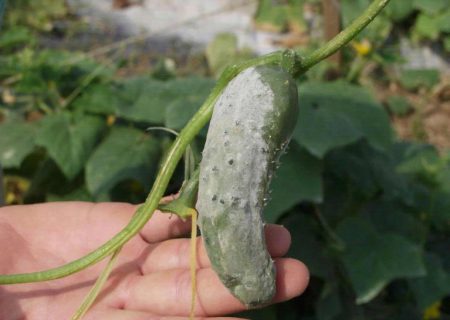
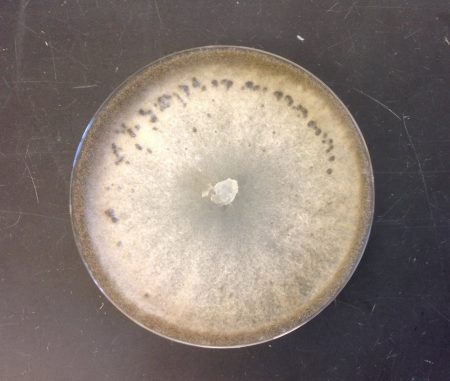
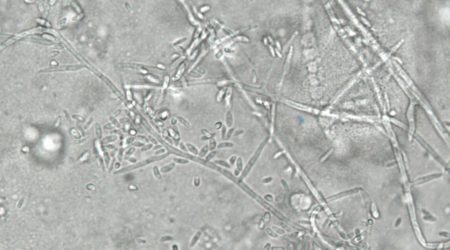

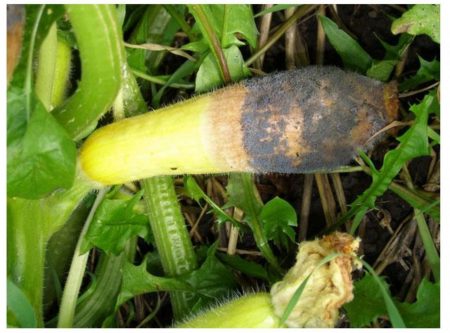
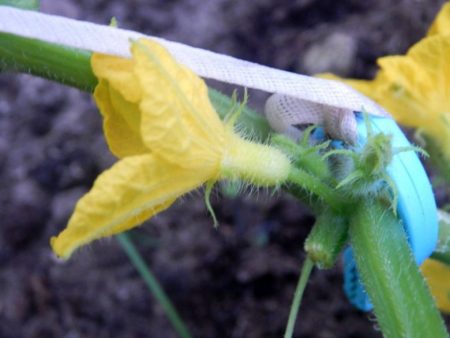


 CUCUMBERS NEVER GET SICK, I'VE BEEN USING ONLY THIS FOR 40 YEARS! I SHARE A SECRET WITH YOU, CUCUMBERS ARE LIKE THE PICTURE!
CUCUMBERS NEVER GET SICK, I'VE BEEN USING ONLY THIS FOR 40 YEARS! I SHARE A SECRET WITH YOU, CUCUMBERS ARE LIKE THE PICTURE! You can dig a bucket of potatoes from each bush. Do you think these are fairy tales? Watch the video
You can dig a bucket of potatoes from each bush. Do you think these are fairy tales? Watch the video
 How our fellow gardeners work in Korea. There is a lot to learn and just fun to watch.
How our fellow gardeners work in Korea. There is a lot to learn and just fun to watch. Eye trainer. The author claims that with daily viewing, vision is restored. They don't charge money for views.
Eye trainer. The author claims that with daily viewing, vision is restored. They don't charge money for views. A 3-ingredient cake recipe in 30 minutes is better than Napoleon. Simple and very tasty.
A 3-ingredient cake recipe in 30 minutes is better than Napoleon. Simple and very tasty. Therapeutic exercises for cervical osteochondrosis. A complete set of exercises.
Therapeutic exercises for cervical osteochondrosis. A complete set of exercises. Which indoor plants match your zodiac sign?
Which indoor plants match your zodiac sign? What about them? Excursion to German dachas.
What about them? Excursion to German dachas.